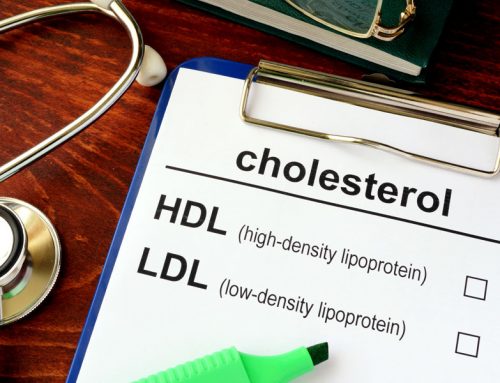
Three solid meta-analyses provided the background data and information that led to the design and funding of the Q-Symbio study of the effects of Q10 supplementation on chronic heart failure.
Why do a meta-analysis of Q10 studies? And, what is a meta-analysis anyway?
A meta-analysis is a statistical method for the combining of the results from two or more independent studies of the effects of the same treatment variable on the same or similar outcomes. In our case, the supplementation with Q10 is the independent variable, the treatment variable, and the various aspects of heart disease are the dependent variables. The meta-analysis method is used in the hope of gaining greater knowledge of the efficacy of bio-medical treatments through the combining and comparing and contrasting of the data from the studies selected for analysis.
Gold standard studies of Q10
In the literature review section of the Q-Symbio study, Dr. Mortensen drew attention to three meta-analyses of the effect of Q10 supplementation on chronic heart failure. The studies selected for analysis in these three meta-analyses needed to be randomized, double-blind, placebo-controlled studies. It wouldn’t do to compare the results from studies with differing research methodologies.
I will take the three meta-analyses of the effect of Q10 on cardiovascular disease in chronological order. The three meta-analyses are the following studies:
- The Soja study (1997) in the Molecular Aspects of Medicine journal (1)
- The Sander study (2006) in the Journal of Cardiac failure (2)
- The Fotino study (2013) in the American Journal of Clinical Nutrition (3)
The Soja study
Dr. Mortensen collaborated with Dr. Soja on this first meta-analysis. Together, they examined the reports of 14 clinical trials involving the treatment of chronic heart failure by adding a Q10 supplement to the conventional medications. Eight of the 14 studies were of sufficiently high design quality to be considered in the meta-analysis.
Drs. Soja and Mortensen focused in on the effect of the Q10 supplementation on seven rather technical cardiovascular outcomes for which normal ranges are known:
- Stroke volume = the amount of blood pumped out of the heart to the body
- Cardiac output = the stroke volume times the heart rate per minute
- Ejection fraction = percentage of blood leaving the heart each time it contracts
- Cardiac index = cardiac output divided by body surface area
- End diastolic volume = amount of blood in the ventricle prior to a contraction
- Systolic time intervals = a parameter of ventricular function during contraction
- Total work capacity = total amount of physical exertion
Dr. Soja and Dr. Mortensen found that, in seven out of the eight studies, the Q10 supplementation had led to statistically significant improvement in all of the outcomes except systolic time intervals and total work capacity. They concluded that there was sufficient documentation to consider adjunctive treatment of chronic heart failure with Q10 supplements.
The Sander study
Almost a decade later, in 2006, Dr. Sander of the University of Connecticut School of Pharmacy and a group of researchers published a second meta-analysis of 11 small randomized placebo controlled studies of the efficacy of Q10 supplementation in heart failure patients. The Q10 doses used in the 11 trials ranged from 60 mg/day to 200 mg/day for periods between one and six months.
The meta-analysis showed significant improvement in ejection fraction and in cardiac output. The researchers concluded that systolic function in chronic heart failure is improved with the use of Q10 treatment. Interestingly, Dr. Sander and his team could see that the Coenzyme Q10 treatment was even more effective in those patients who were not being treated with angiotensin-converting enzyme inhibitors. Note: the angiotensin-converting enzyme inhibitors are used to prevent the production of angiotensin II, which otherwise would cause the narrowing of your blood vessels and the rising of your blood pressure, thus making your heart work even harder.
The Fotino study
Then, in 2013, Dr. Fotino and her colleagues at the School of Medicine at Tulane University did a third meta-analysis of the effect of Coenzyme Q10 supplementation on heart failure. Specifically, Dr. Fotino wanted to evaluate the effect of Q10 supplementation on the patients’ ejection fraction and on the patients’ New York Heart Association (NYHA) functional classification.
The Tulane researchers looked at a total of 13 studies of Q10 supplement in heart failure patients, 11 of which had ejection fraction as an end-point and 3 of which had NYHA classification as an end-point. The 13 studies ran from 4 to 28 weeks. The dosage of Q10 treatment was in the range from 60 mg/day to 300 mg/day.
The researchers found that supplementation with Coenzyme Q10 did, indeed, result in a positive change in ejection fraction and a slight but not statistically significant change in NYHA classification. However, the NYHA result must be regarded with caution because the sample size was so small.
Dr. Fotino and her colleagues did some interesting sub-group analyses. For example, they were able to see significant improvement in ejection fraction in studies with a treatment duration of 12 weeks or less and in studies with a daily dosage equal to or less than 100 mg. Again, the sample sizes are small, so caution is the order of the day, but it is encouraging to see that positive effects can be realized relatively quickly (less than 12 weeks) and with affordable quantities of Q10 (100 mg or less per day).
Remember: in the Q-Symbio study, Dr. Mortensen deliberately decided to use 300 mg/day of a known well-absorbed Q10 formulation to ensure that the Q10 had a chance to make a difference.
Dr. Fotino concluded that some well-designed studies enrolling diverse populations were needed. The Q-Symbio study, published in 2014 in the Journal of the American College of Cardiology Heart Failure journal was a response to that conclusion.
The outcomes of the Q-Symbio study
Dr. Mortensen and his fellow researchers were influenced by the results of the many of the studies considered in the above meta-analyses to design and carry out the Q-Symbio study. They wanted to study the effect of supplementation with Coenzyme Q10 on morbidity and mortality in chronic heart failure patients. In a study enrolling 420 patients, who were randomly assigned to receive 100 mg of Q10 three times a day for two years, Dr. Mortensen and the team of researchers demonstrated the following statistically significant outcomes in the Q10 treatment group (as compared to the placebo group):
- Fewer adverse cardiovascular events
- Fewer cardiovascular deaths
- Fewer all-cause deaths
- Fewer hospitalizations
The results of the Q-Symbio study, building on the meta-analyses and on the results of the earlier Morisco study, were confirmation of what cardiologists had good reason to suspect was the case.
Supplementation with Coenzyme Q10, itself a natural substance, should become a valuable adjunctive treatment for heart failure patients.
Moreover, as we now know, supplementation with Coenzyme Q10 should become a necessary adjunctive treatment for all patients who are taking a statin medication because statin medications do inhibit the body’s production of Q10.
Sources:
- Soja, A.M. and Mortensen, S.A. (1997) Treatment of congestive heart failure with coenzyme Q10 illuminated by meta-analyses of clinical trials. Molecular Aspects of Medicine. 18(suppl):159–168.
- Sander, S., Coleman, C. I., Patel, A. A, Kluger, J., White, C. M. (2006). The impact of coenzyme Q10 on systolic function in patients with chronic heart failure. Journal of Cardiac Failure. 12:464–472.
- Fotino, A. D., Thompson-Paul, A. M., & Bazzano, L. A. (2013). Effect of coenzyme Q₁₀ supplementation on heart failure: a meta-analysis. The American Journal of Clinical Nutrition, 97(2), 268-275.









Leave A Comment